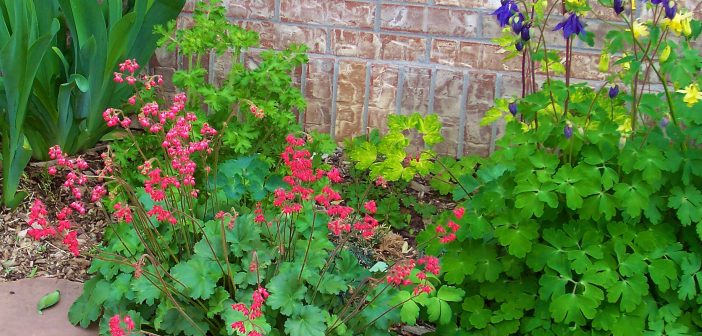Plants that flower in the spring put an end to the monotony of winter with a colorful prelude to summer. Long before summer plants fully wake up, spring plants have responded to the gradual change of seasons. Not only are they a welcome sight for us, but they also provide food for wildlife at a time when food is scarce—by early spring, most of last year’s plant harvest has been consumed. These sixteen spring-flowering perennials will brighten your yard while providing food. It doesn’t get better than that!
Note that the bloom times shown below represent a broad range. So, plants may bloom earlier or later within their range, depending on where you live.
Native spring-flowering perennials for full sun
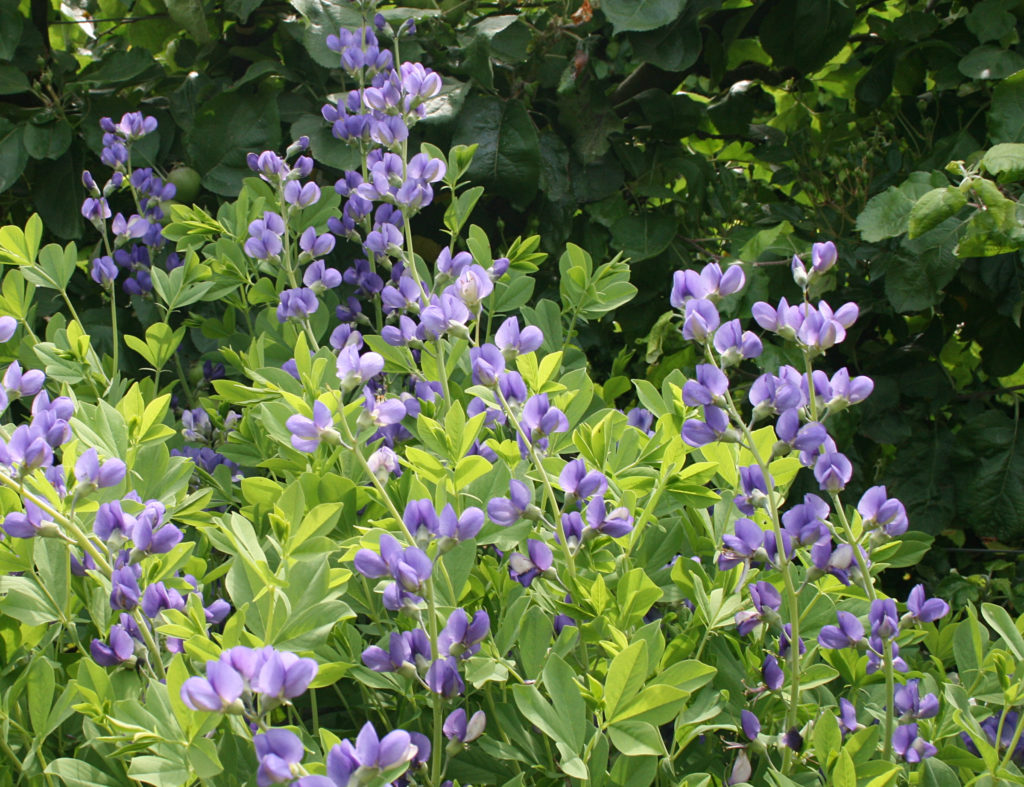
Blue Wild Indigo, Baptisia australis. Wildlife value: nectar for native bees, bumblebees. Blooms: Apr to July. Exposure: full sun. (Jean-Pol Grandmont / Wiki; cc by-sa 3.0)
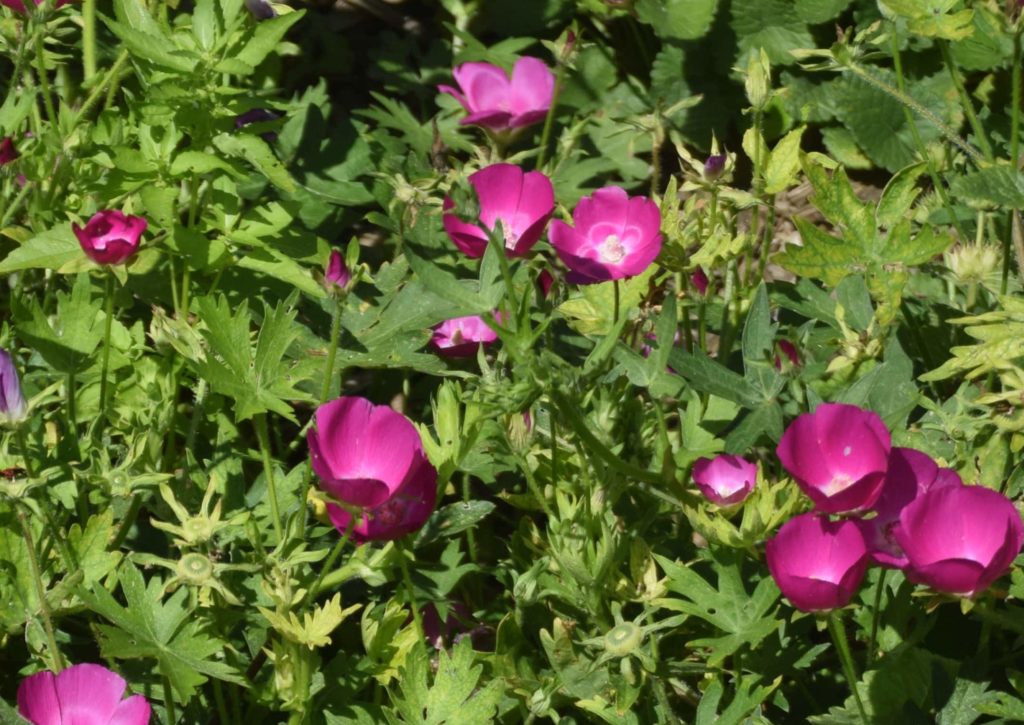
Purple Poppy Mallow, Callirhoe involucrata. Wildlife value: nectar for native bees; host plant for Gray Hairstreak Butterfly. Blooms: Mar to June. Exposure: full sun. (Krzysztof Golik wiki cc by-sa 4.0)
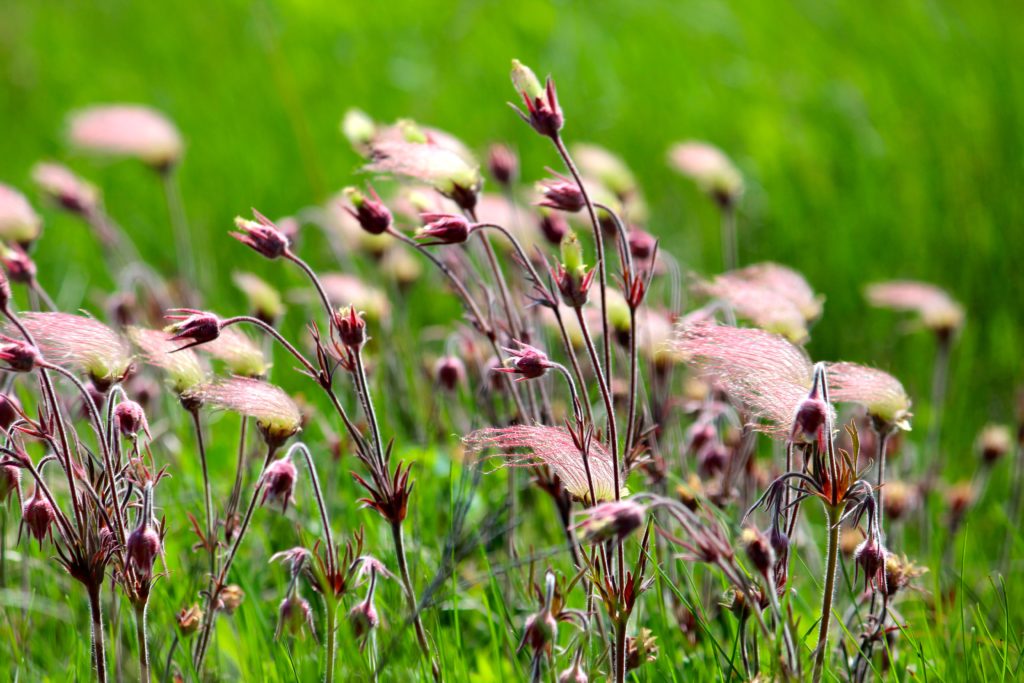
Prairie Smoke, Geum triflorum. Wildlife value: nectar for butterflies. Blooms: Apr to May. Exposure: full sun. (USFWS, Mountain-Prairie / Wiki cc by 2.0)
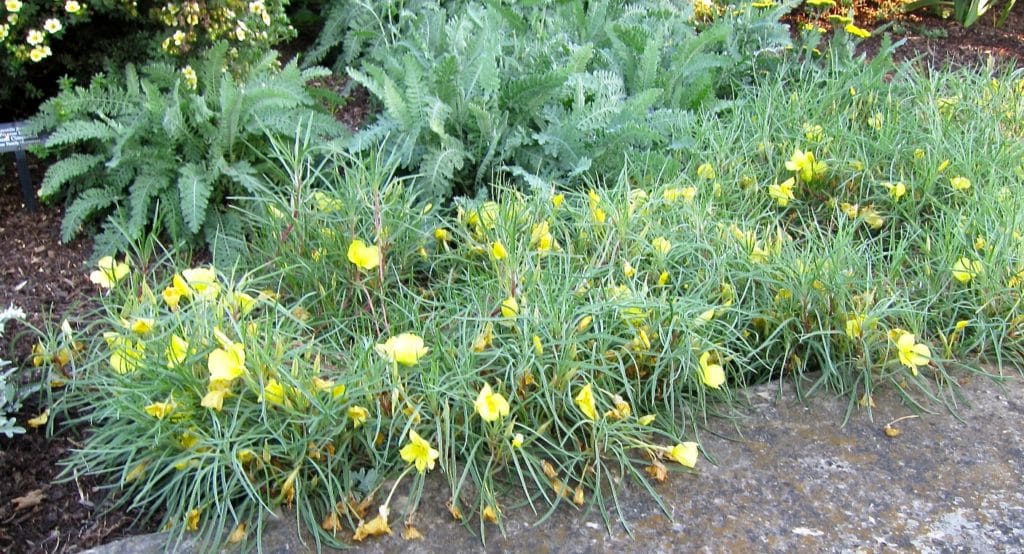
Missouri Evening Primrose, Oenothera macrocarpa. Wildlife value: nectar for hummingbirds, butterflies, nectar-moths. Blooms: Apr to Aug. Exposure: full sun. (KM / Flickr; cc by 2.0)
More native spring-flowering perennials for full sun
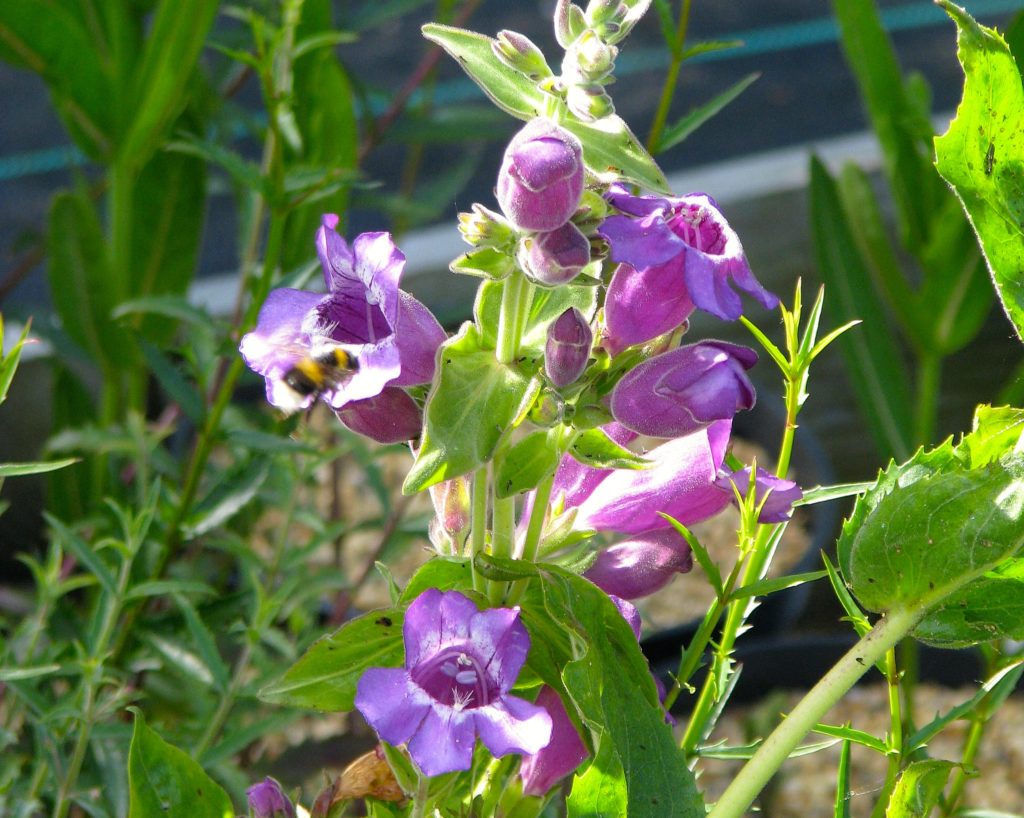
Prairie Penstemon, Penstemon cobaea. Wildlife value: nectar for hummingbirds; host plant for Dotted Checkerspot Butterfly. Blooms: Apr to May. Exposure: full sun. (Peganum / Wiki; cc by-sa 2.0)
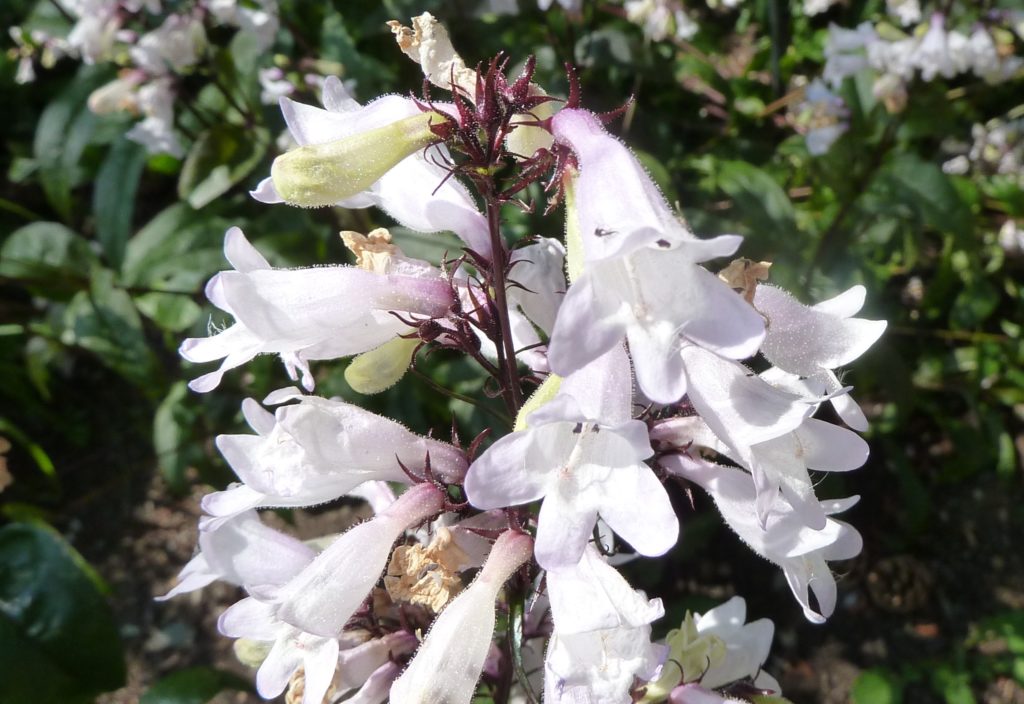
Foxglove Penstemon, Penstemon digitalis. Wildlife value: nectar for hummingbirds, bumblebees. Blooms: May to July. Exposure: full sun. (Wendy Cutler / Flickr; cc by 2.0)
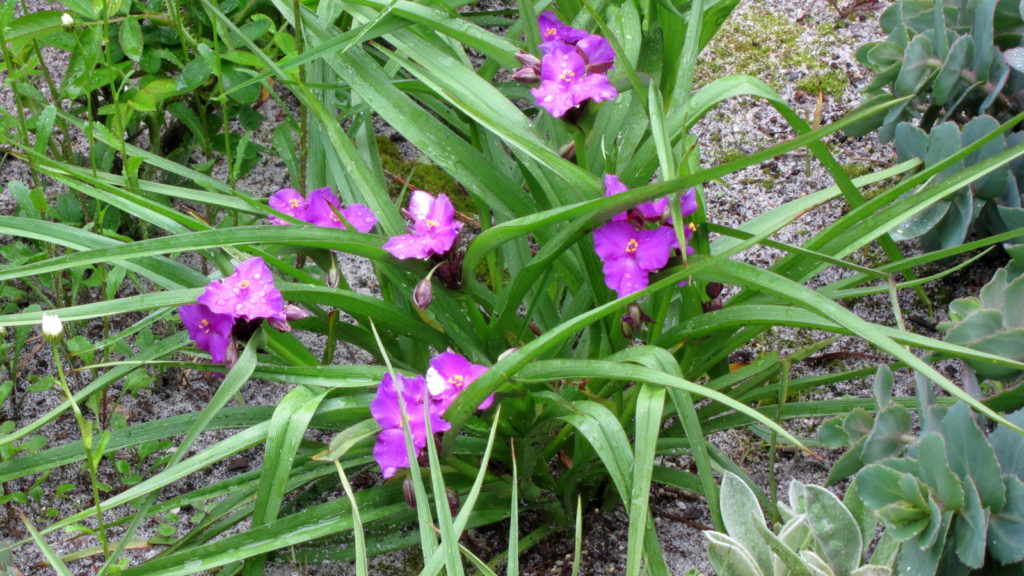
Spiderwort, Tradescantia tharpii. Wildlife value: nectar for native bees. Blooms: Apr to May. Exposure: full sun. (KM Flickr; cc by 2.0)
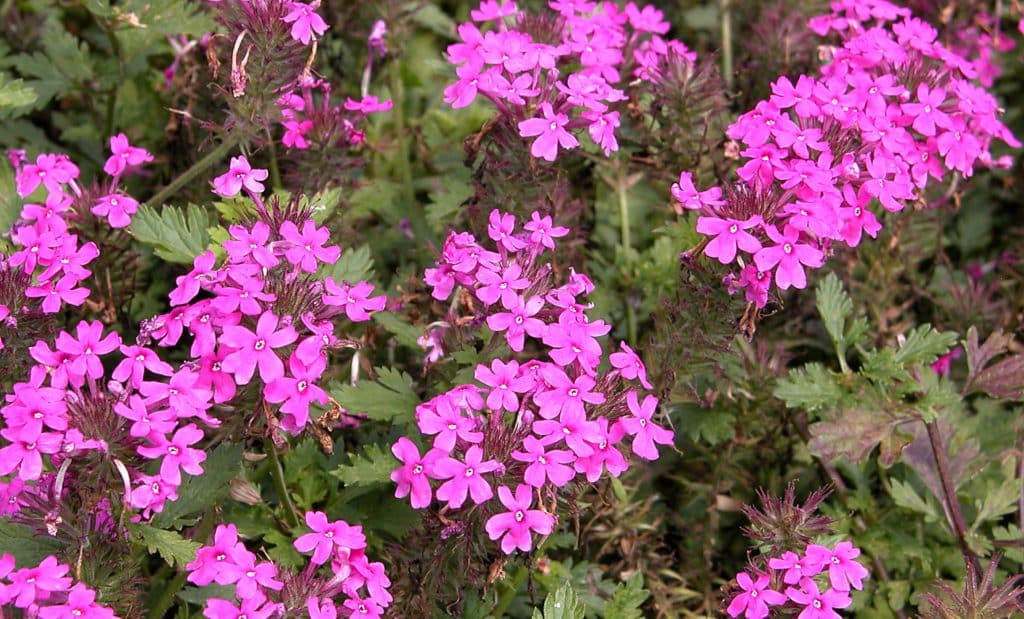
Rose verbena, Glandularia canadensis. Wildlife value: nectar for butterflies. Blooms: Feb to Sept. Exposure: full sun. (Carl Lewis / Flickr; cc by 2.0
Native spring-flowering perennials for part shade, shade
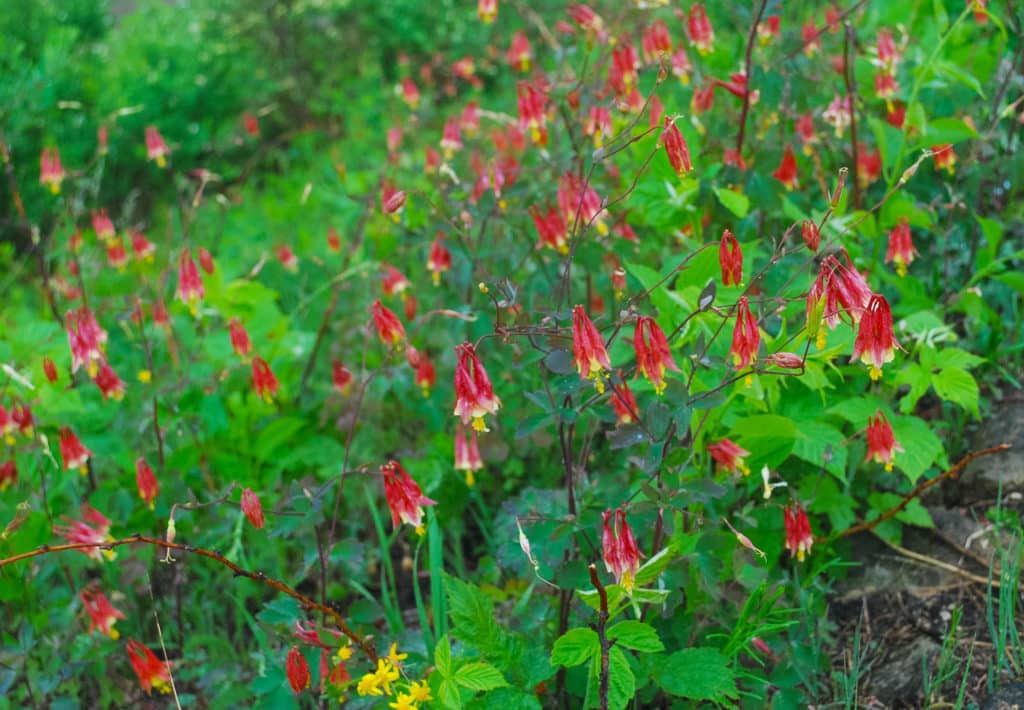
Wild Red Columbine, Aquilegia canadensis. Wildlife value: nectar for butterflies, hummingbirds; host plant for Columbine Duskywing Butterfly. Blooms: Feb to July. Exposure: part shade. (Joshua Mayer / Flickr cc by-sa 2.0)
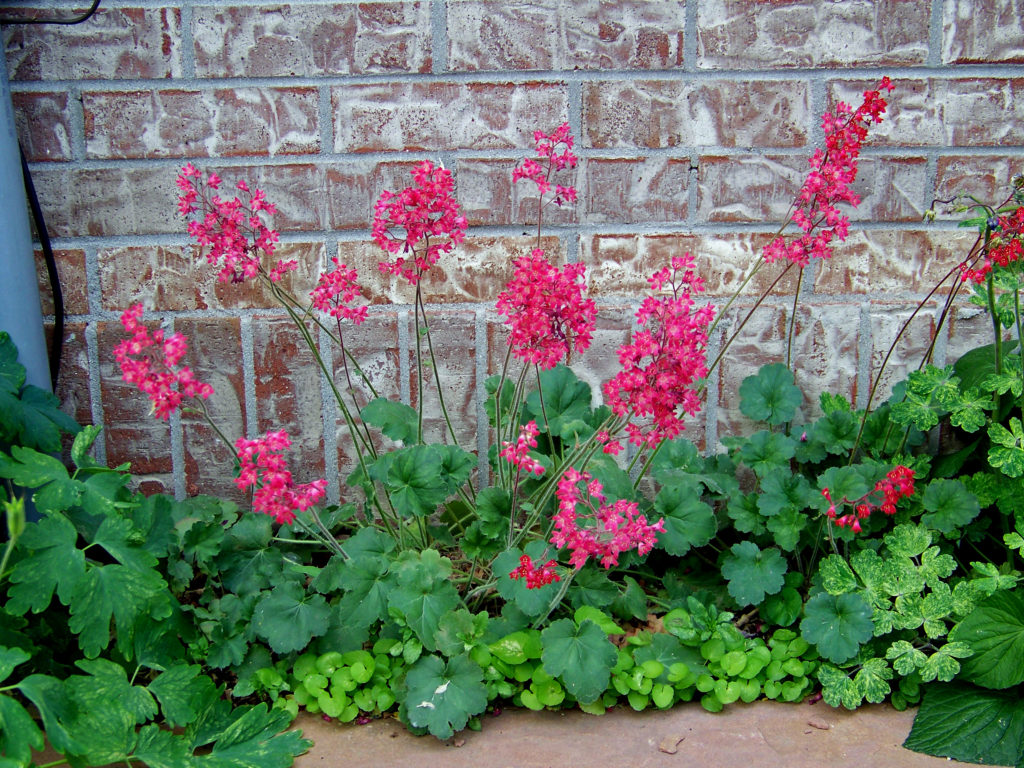
Coral Bells, Heuchera sanguinea. Wildlife value: nectar for hummingbirds. Blooms: May to June. Exposure: shade. (Patrick Standish / Flickr; cc by 2.0)
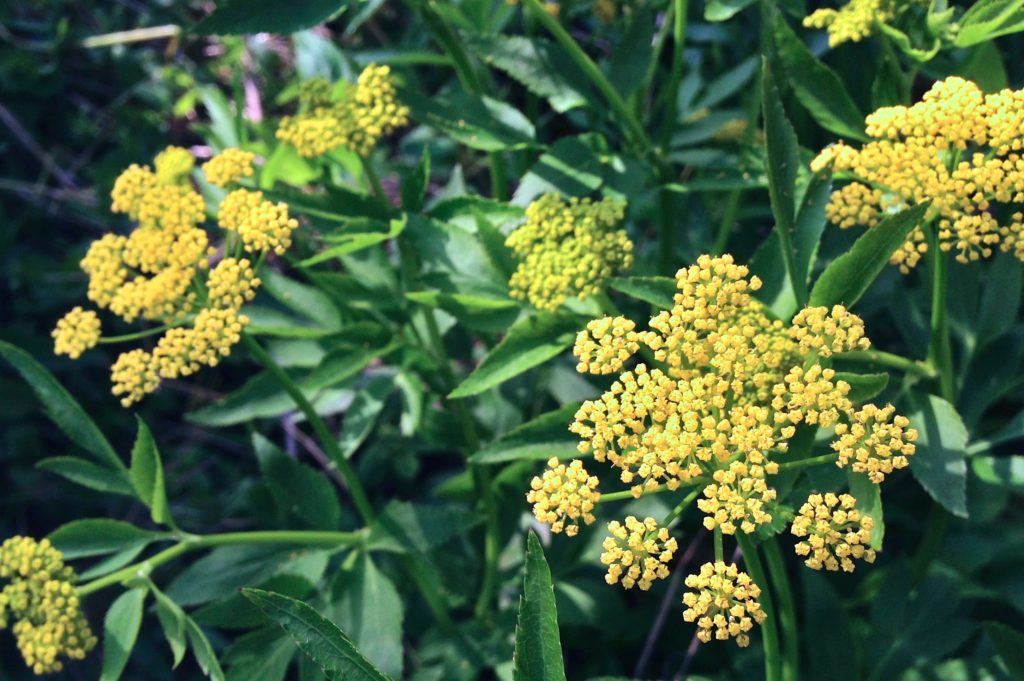
Golden Alexanders, Zizia aurea. Wildlife value: nectar for butterflies; host plant for Black Swallowtail Butterfly. Blooms: Apr to Aug. Exposure: sun, part shade. (Fritzflohrreynolds / Wiki; cc by-sa 3.0)
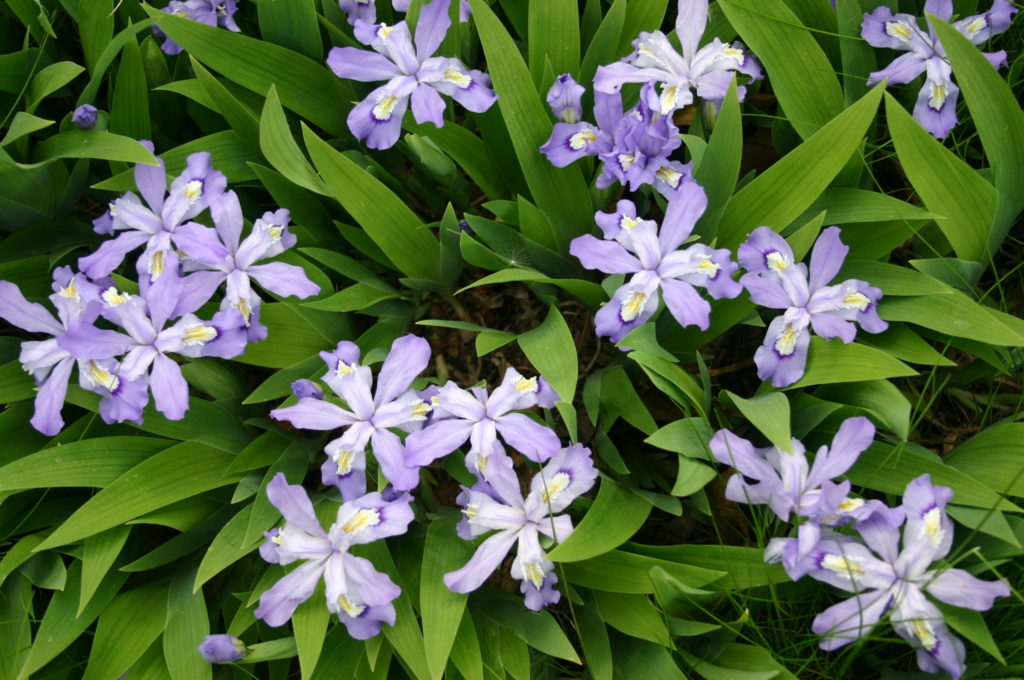
Dwarf Crested Iris, Iris cristata. Wildlife value: nectar for hummingbirds, native bees. Blooms: Mar to May. Exposure: part shade, shade. (Ryan Somma / Flickr; cc by 2.0)
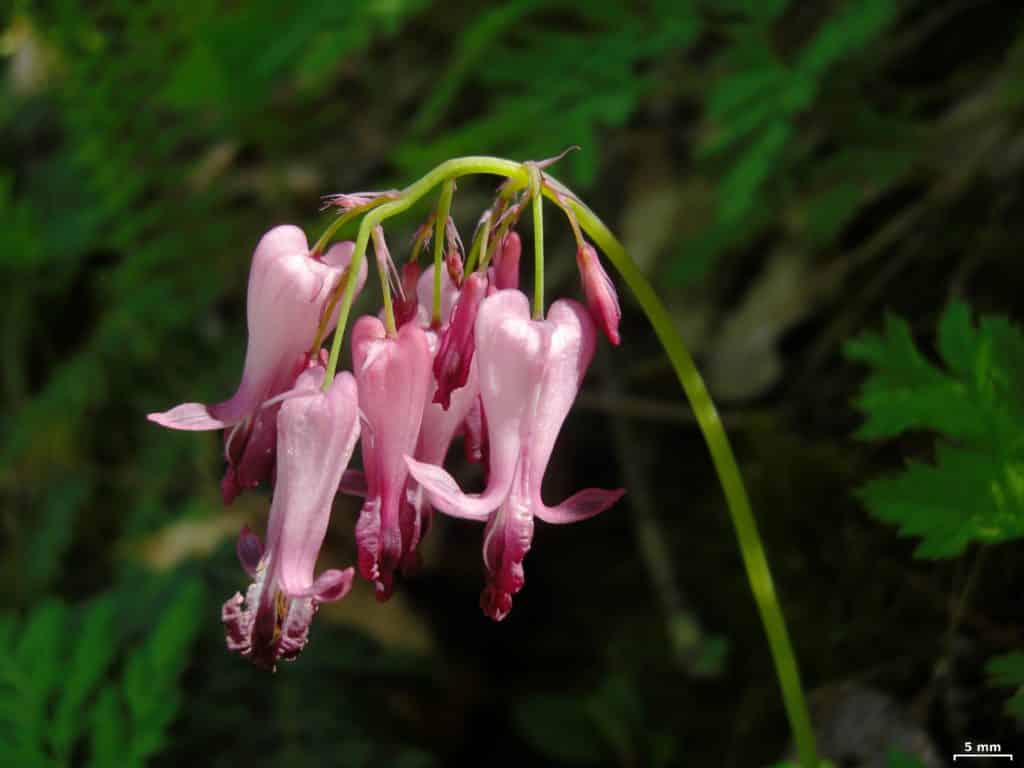
Bleeding Hearts, Dicentra eximia. Wildlife value: nectar for hummingbirds, bumblebees; host plant for Clodius Parnassian Butterfly. Blooms: Mar to Oct. Exposure: part shade, shade. (Jason Hollinger Flickr; cc by 2.0)
Native spring-flowering vines for sun, part shade
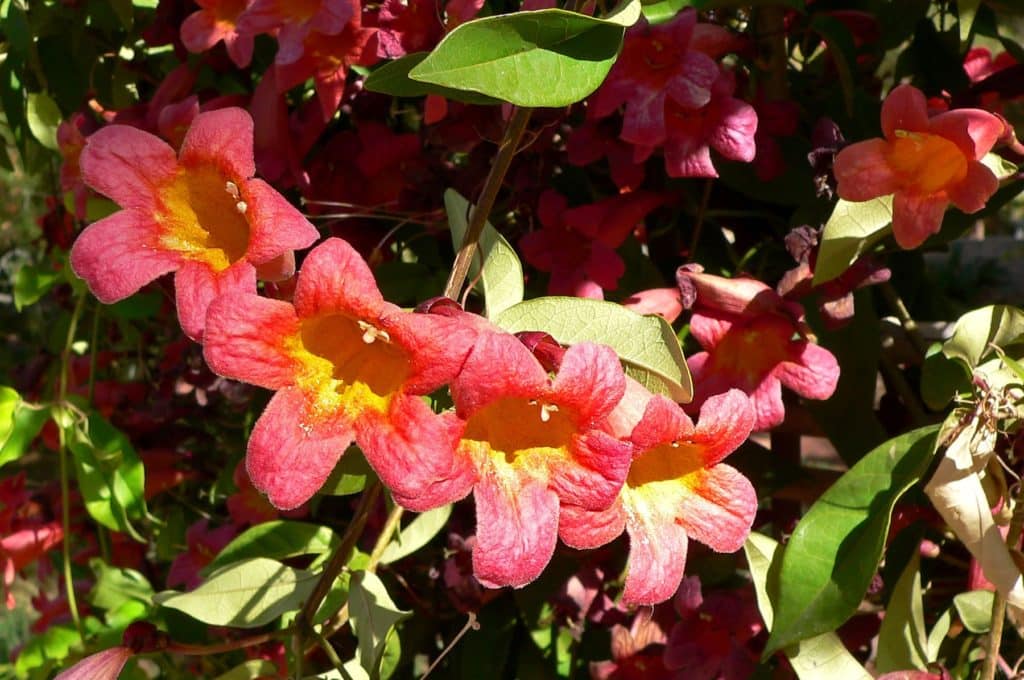
Crossvine, Bignonia capreolata. Wildlife value: nectar for hummingbirds, butterflies. Blooms: Mar to May. Exposure: sun, part shade. (Stan Shebs / Wiki; cc by-sa 3.0)
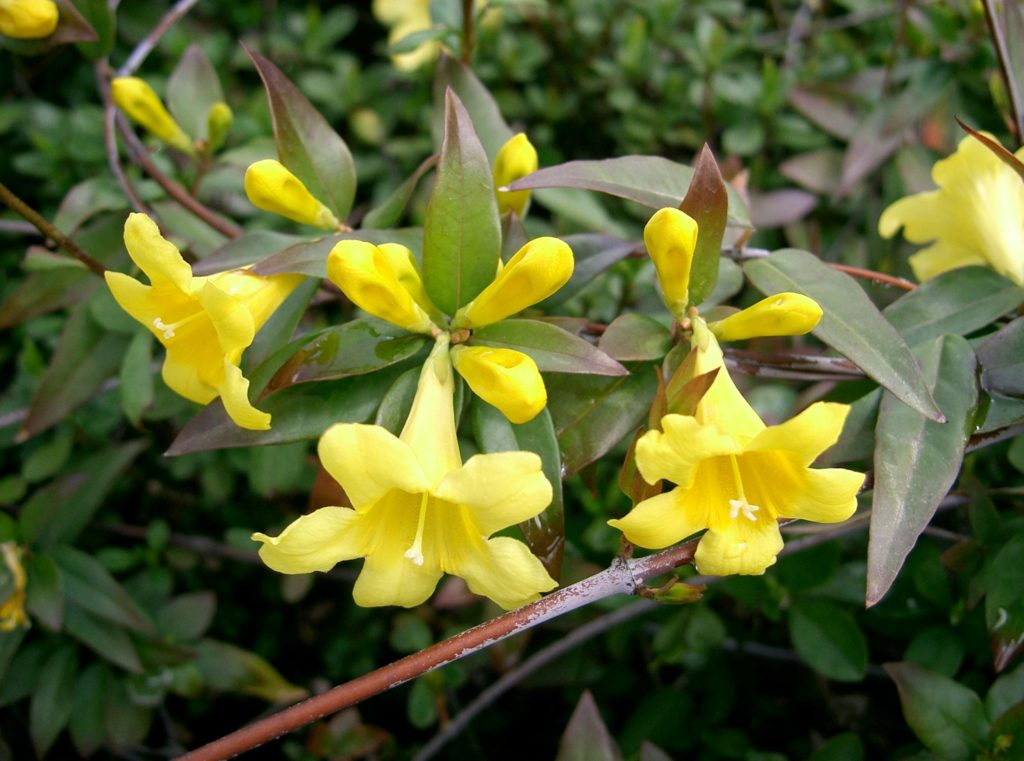
Carolina Jessamine (Evening Trumpetflower), Gelsemium sempervirens. Wildlife value: nectar for hummingbirds, native bees, Spicebush Swallowtail Butterfly. Blooms: Jan to May; Dec. Exposure: sun, part shade. (Kenpei / Wiki; cc by-sa 2.0)
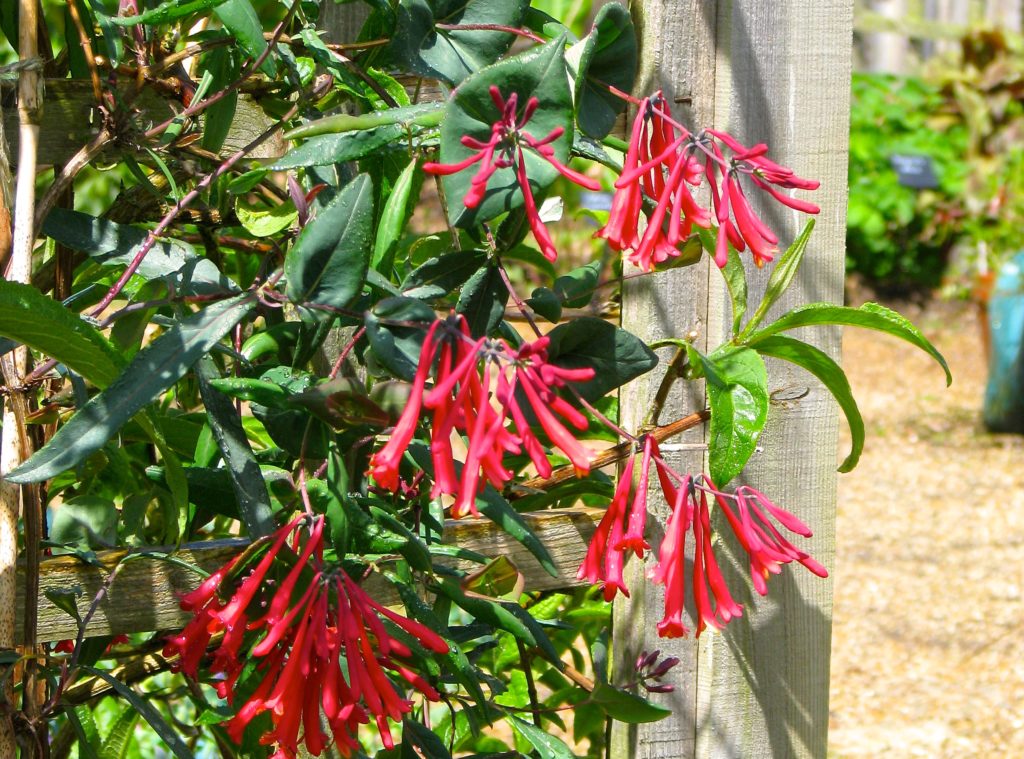
Coral Honeysuckle, Lonicera sempervirens. Wildlife value: nectar for hummingbirds, native bees; host plant for Spring Azure Butterfly and Snowberry Clearwing Sphinx Moth. Blooms: Mar to Jun. Exposure: sun, part shade. (Peganum / Flickr; cc by-sa 2.0)
More reading:
Attract more butterflies with native nectar plants
Think all moths are drab? These will change your mind
USDA Plant Hardiness Zone Map
Plan in winter for summer yard projects


